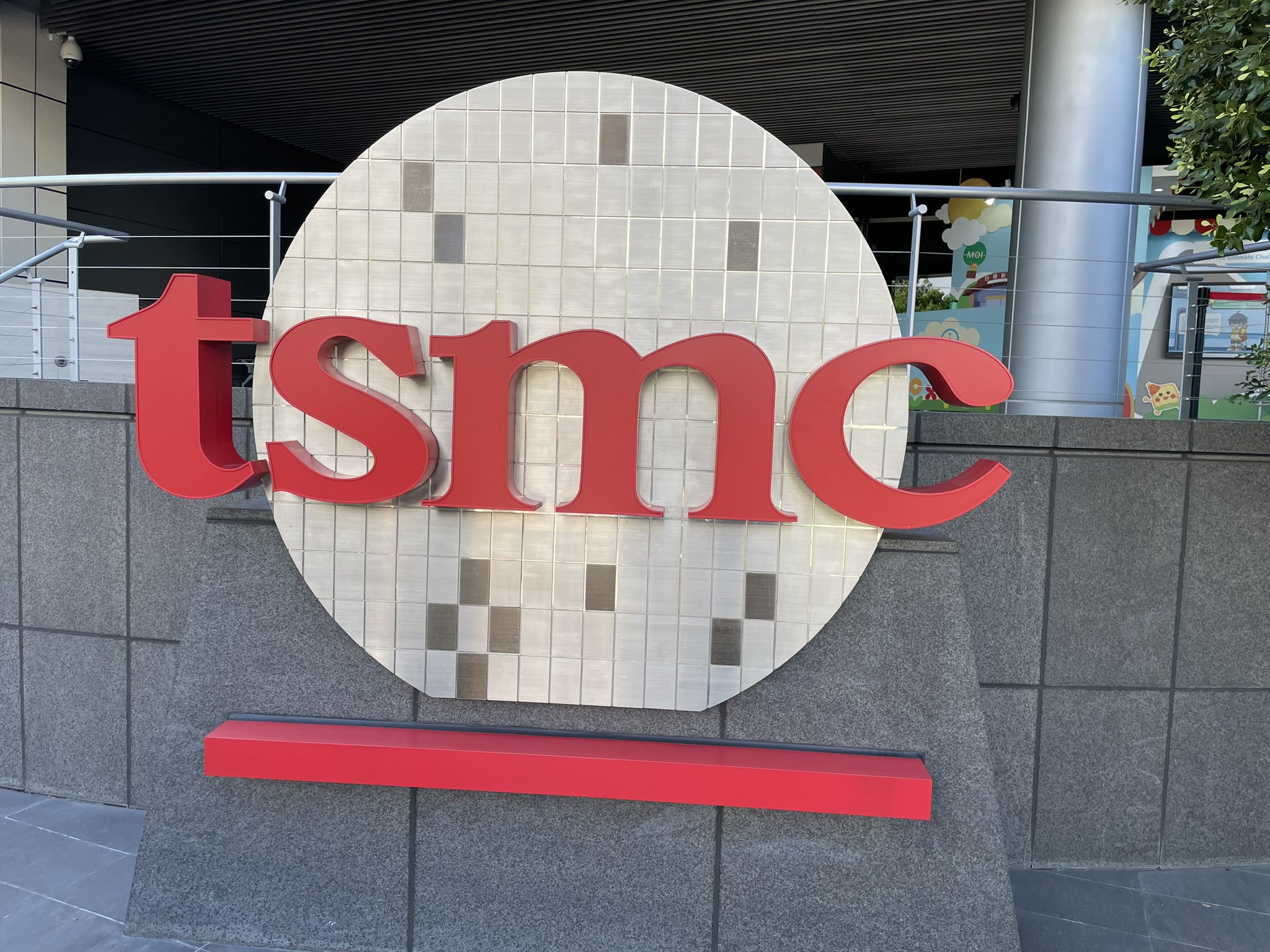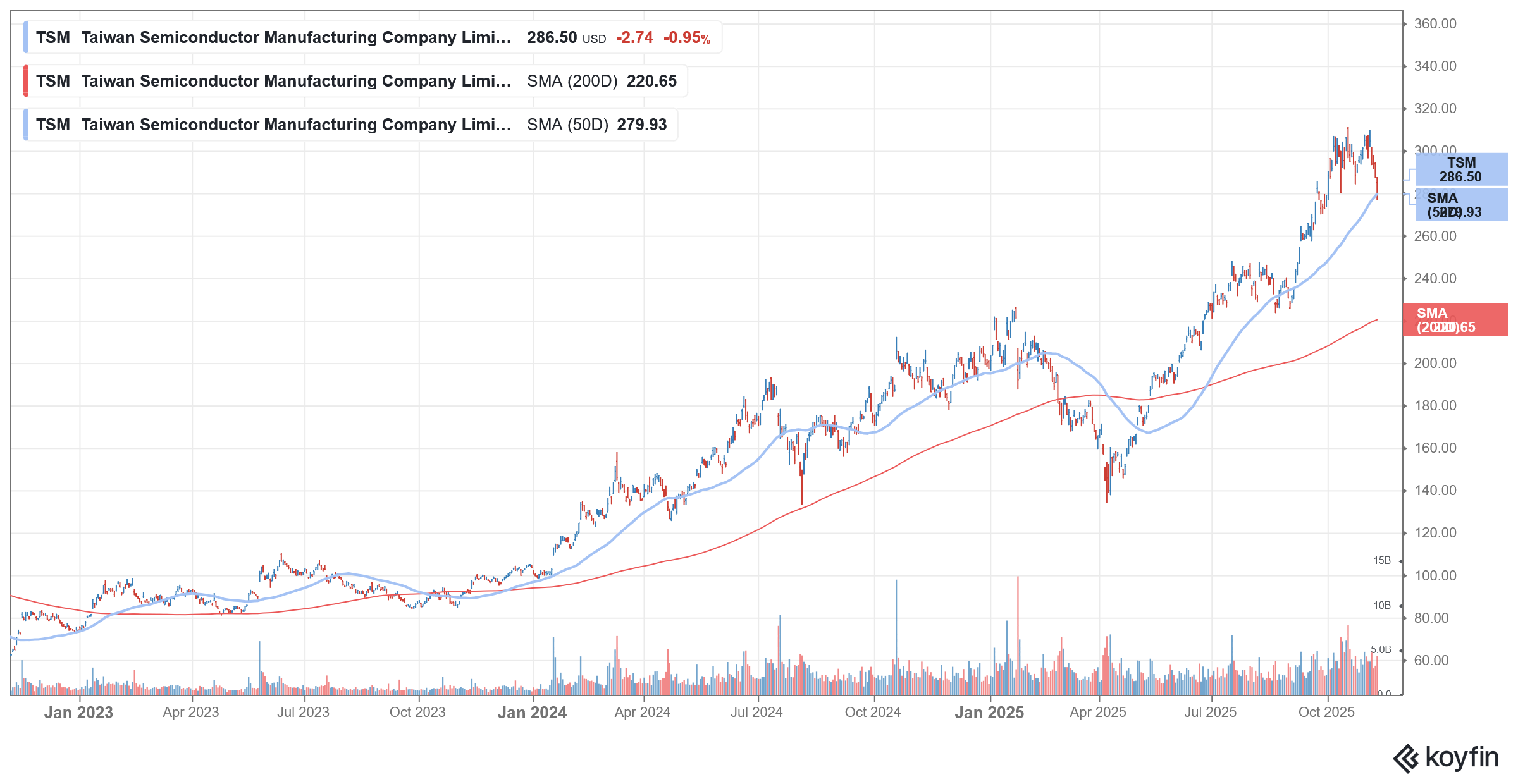
TSMC shares are up in US pre-market price action today after the company reported a 16.9% year-over-year rise in October sales. While that number was in line with analysts’ estimates, it is the slowest pace since February 2024, raising concerns over the sustainability of the artificial intelligence (AI) mania.
Meanwhile, in the first ten months of 2025, TSMC’s sales have risen by 33.8% as the company continues to benefit from growing demand for AI chips.
TSMC is benefiting from the AI pivot
The core driver behind the sustained revenue strength lies in TSMC’s technology leadership and its dominant position in the High-Performance Computing (HPC) market segment.
- AI Accelerators Fueling Demand: The explosive growth of generative AI and large language models (LLMs) continues to drive overwhelming demand for specialized AI accelerators (like advanced GPUs and custom chips). TSMC’s 3-nanometer (3nm) and 5-nanometer (5nm) process nodes are the exclusive manufacturing sites for these advanced processors, ensuring near-full utilization of these cutting-edge lines.
- Product Ramps and Shipment Timing: The 11% month-over-month jump in October is likely attributed to the ramping up of new product shipments for major clients. This typically includes the volume production phase for flagship smartphone chips (following their late-summer/early-fall launch cycles) and the execution of large, pre-ordered volumes of HPC and data center chips.
- Non-AI Market Recovery: While AI and HPC dominate, the October sales figures also suggest a gradual but discernible recovery in non-AI end markets. Segments like smartphones, PCs, and consumer IoT products—which had been battling inventory corrections on older nodes—appear to be stabilizing, contributing a modest uplift to the overall consolidated results.
What was behind the slowdown in TSMC’s October sales
Analysts are not too perturbed by the slight slowdown in October sales. Most see the slowdown in growth as less a sign of fundamental weakness and more a reflection of the law of large numbers, as it becomes mathematically harder to maintain 30%+ YoY growth after a year of massive expansion and a cyclical slowdown in older node demand being offset by the newer, higher-value advanced nodes.
The ongoing struggle for the entire industry is the limited supply of CoWoS (Chip-on-Wafer-on-Substrate) advanced packaging capacity, which is essential for stacking the complex chips used in AI/HPC. The strong October revenue confirms that TSMC is aggressively executing on its CoWoS expansion to deliver finished products to its clients, who are clamoring for more supply.
TSMC produces the bulk of AI chips globally
Notably, Taiwan, particularly TSMC, produces the bulk of AI chips globally. The strategic importance of semiconductors has increased as they are used in the production of many goods, ranging from cars to gadgets. The COVID-19 pandemic exposed the vulnerabilities in the global supply chain, and since then, several countries have been looking to onshore ship production.
As a cornerstone of the AI boom, semiconductors have surged in strategic importance. This rise, coupled with escalating geopolitical tensions, has placed a spotlight on the technological advantages of key players in the chip supply chain, such as TSMC and other industry leaders.
The Trump administration has been looking to increase domestic chip production and reduce reliance on imports from Taiwan. Taiwan is resisting pressure from the Trump administration to produce half of the chips it sells in the United States domestically. President Donald Trump has been pushing for the onshoring of chip production and wants TSMC to commit to increasing its manufacturing footprint in the country.
Trump reportedly pushed TSMC to invest in Intel
Previously, there were reports that Trump pushed TSMC to invest in Intel as part of the trade deal. TSMC is a competitor to Intel, and both companies use differing technologies to produce chips.
Meanwhile, in August, the US government formalized an $8.9 billion investment in Intel common stock, securing an approximately 10% equity stake. This funding is largely derived from grants originally awarded under the U.S. CHIPS and Science Act, which aims to bolster domestic semiconductor manufacturing. The investment is a clear indication of Washington’s commitment to ensuring a resilient, U.S.-based supply chain for advanced semiconductors.
SoftBank and Nvidia invested in Intel
Japanese technology investment group SoftBank Group also committed a $2 billion capital injection in August, further supporting Intel’s financial standing and turnaround efforts under CEO Lip-Bu Tan.
In September, Nvidia announced a $5 billion investment in Intel common stock as part of a strategic partnership. The collaboration is focused on jointly developing multiple generations of custom data center and PC products, accelerating AI and accelerated computing applications by integrating NVIDIA’s NVLink with Intel’s CPU and manufacturing platforms.
US-China chip war
There has been an apparent AI chip war between the US and China, and the former has been looking to curb China’s progress in AI by restricting exports of advanced AI chips. However, there have been apprehensions that China has been circumventing the US ban through transshipments. The country is also looking at domestic companies to reduce its reliance on US companies.
In a major escalation, the Chinese government has reportedly issued directives requiring all state-funded data center projects to exclusively use domestically manufactured AI chips. Projects less than 30% complete have reportedly been ordered to remove any installed foreign-made chips or cancel pending orders.
This policy immediately benefits Chinese tech giants like Huawei (with its Ascend series), Cambricon Technologies, and Biren Technology, providing them with a guaranteed stream of high-volume orders necessary to scale production, improve their technology, and become cost-competitive.


Question & Answers (0)